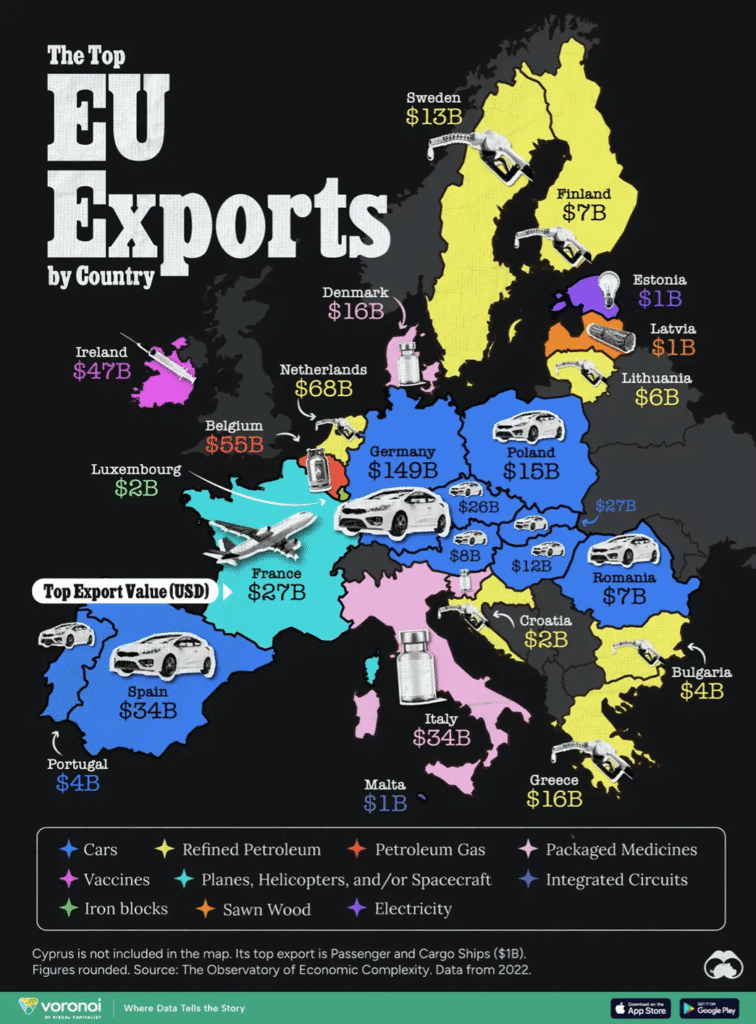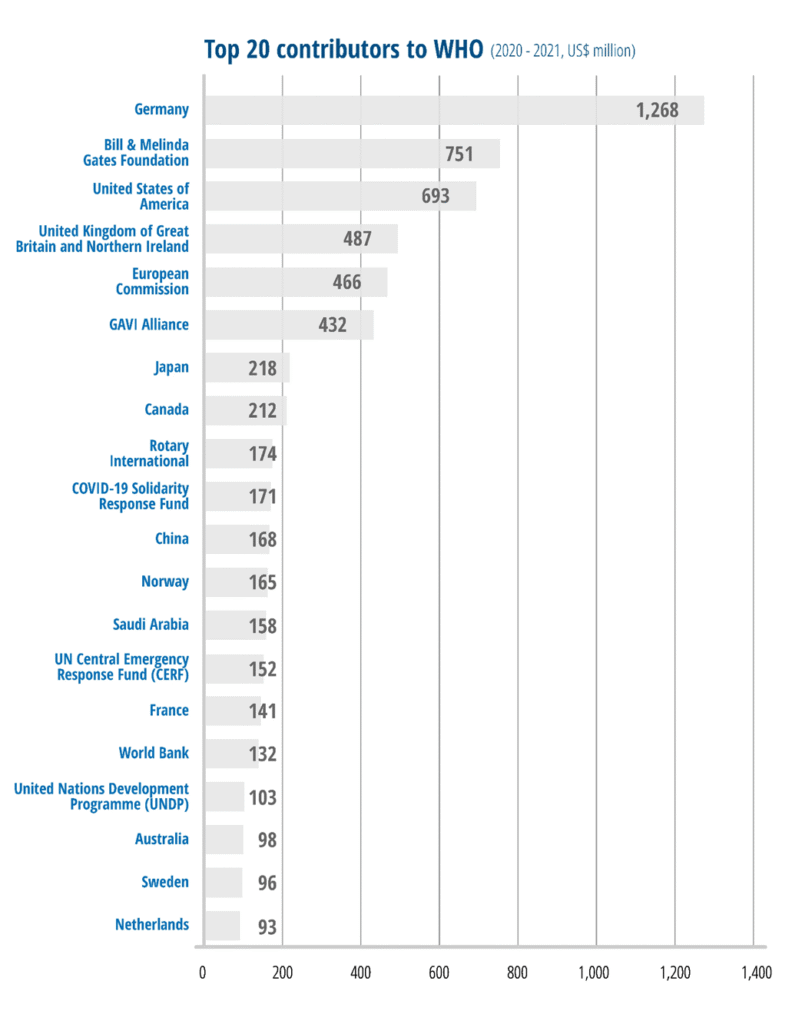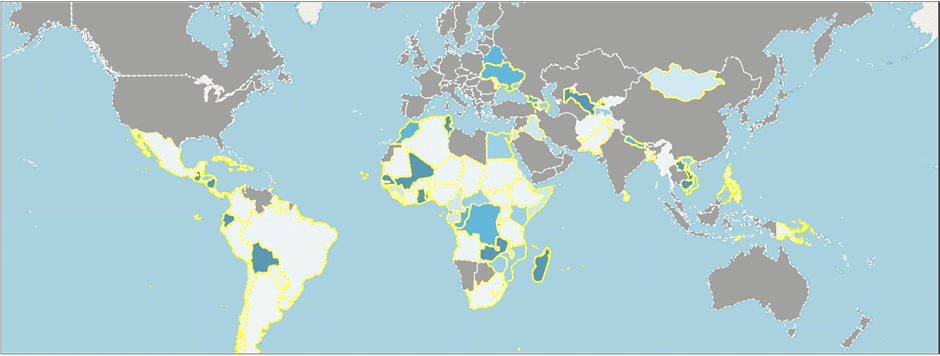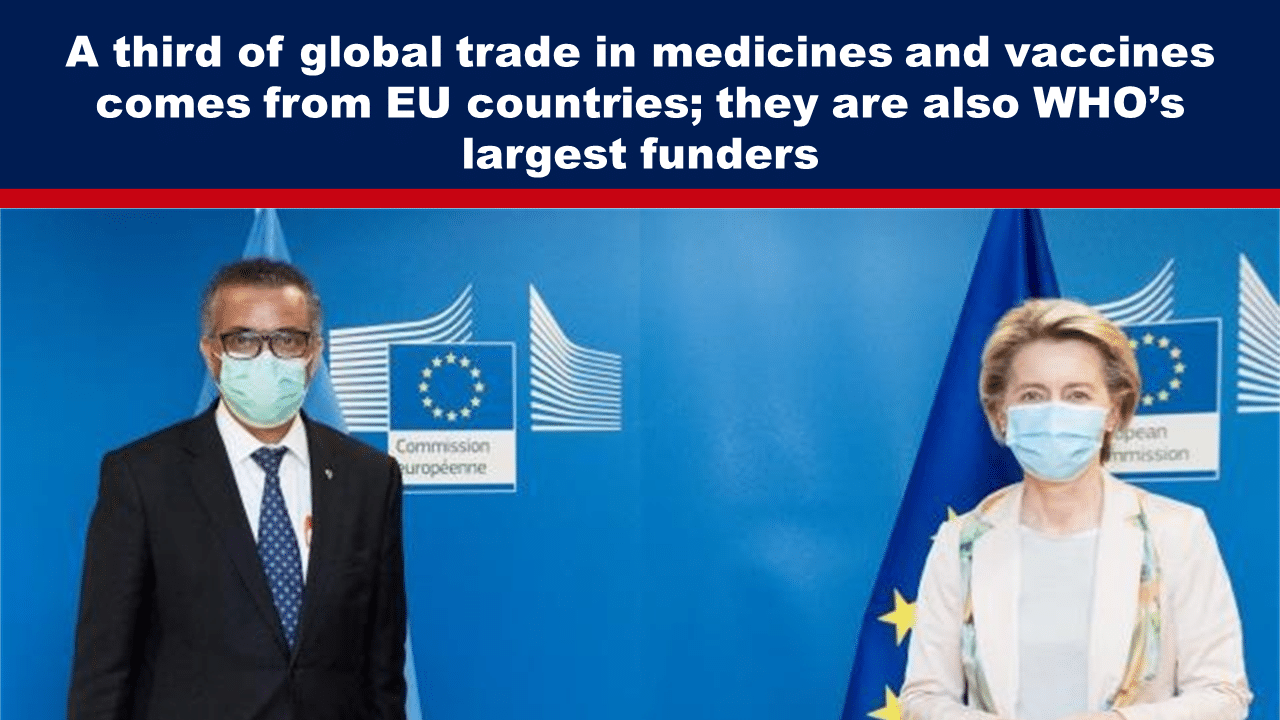The European Union (“EU”) exports over $6 trillion in products annually. The bloc boasts a diversified economy encompassing fuel and mineral industries, cars, vaccines and technology.
Regarding vaccines and packaged medicines, EU countries make up at least 36% of global trade, with Germany being by far the largest exporter of these products from the bloc.
Is it merely a coincidence that Germany is the World Health Organisation’s (“WHO’s”) largest contributor and the European Commission is the fifth largest contributor?
Let’s not lose touch…Your Government and Big Tech are actively trying to censor the information reported by The Exposé to serve their own needs. Subscribe to our emails now to make sure you receive the latest uncensored news in your inbox…
A week ago, Visual Capitalist published a graphic of the EU member states top exports as of 2022.
Belgium, Bulgaria, Croatia, Finland, Greece, Lithuania, Sweden and the Netherlands have petroleum gas or refined petroleum as their top export product.
Besides petroleum, automobiles and automobile parts significantly contributed to the EU economy. Austria, Czech Republic, Germany, Hungary, Portugal, Poland, Romania, Slovakia and Spain had automotive products as their top exports.
Other products helped diversify the EU economy, Visual Capitalist wrote. France’s top exports were planes, helicopters and/or spacecraft, while Italy and Denmark excel in the packaged medicines industry. Ireland has a significant pharmaceutical industry, hosting major companies such as Pfizer, Johnson & Johnson, Merck and Novartis.

According to the data table provided by Visual Capitalist in support of their graphic, the EU’s packaged medicine industry exported a total of US$110.1 billion to countries outside the EU split as follows:
- Denmark – packaged medicines worth US$15.9 billion
- Ireland – vaccines worth US$47.3 billion
- Italy – packaged medicines worth US$34.4 billion
- Slovenia – packaged medicines worth US$12.5 billion
However, this information only shows the value of medicines exported for those EU countries where medicines were the largest export. It does not include, for example, Germany’s pharmaceutical exports because Germany’s largest export was cars.
To get a better feeling for the value of pharmaceutical products the EU exports we briefly looked at the source of Visual Capitalist’s information.
For their graphic, Visual Capitalist used data from The Observatory of Economic Complexity (“OEC”). According to OEC’s classification, pharmaceutical products include the subclasses “packaged medicaments,” “vaccines, blood, antisera, toxins and cultures,” “special pharmaceuticals,” “unpackaged medicaments,” “bandages,” and “glands and other organs.”
In keeping with Visual Capitalist’s basis for preparing their graphic, we have limited our overview to the two pharmaceutical products that appeared in its ‘EU Exports by Country’.
In 2022, the total exports of “packaged medicaments,” globally, was US460 billion. These are products exported by countries and so do not include products that are produced for domestic consumption.
OEC’s list of top exporters of packaged medicaments were Germany ($74.8B), Switzerland ($45.4B), the United States ($38.2B), Ireland ($34.8B) and Italy ($34.4B) – a total of US227.6 billion for the top 5 exporters, representing 49.5% of global exports or global trade.
Visual Capitalist’s graphic for the EU also revealed “vaccines” as the top export for Ireland. These are categorised under OEC’s pharmaceutical products subclass “vaccines, blood, antisera, toxins and cultures.” This subclass includes vaccines for veterinary use. The total exports globally were US$330 billion, including US$4.05 billion for veterinary use.
OEC’s top exporters of vaccines in 2022 were Ireland ($47.3B), Belgium ($47.1B), United States ($46.8B), Switzerland ($46.7B), and Germany ($45.5B) – a total of US$233.4 billion for the top 5 exporters, representing 70.2% of global exports.
In the paragraphs above, we’ve highlighted EU exports in bold. In both of the two subclasses of pharmaceutical products, three of the top five exporters are EU member states. The total EU exports from the top exporters of both subclasses are US$283.9 billion, representing 36% of the global exports of US$790 billion (US$460B + US$330B).
Although we have not extracted data from all EU countries for all pharmaceutical products, it is already clear that packaged medicines and vaccines are a significant portion of the EU’s trade.
Why are we noting this? While we wouldn’t want to start any “conspiracy theories,” we also don’t believe in coincidences.
WHO is a few years behind in publishing its annual reports. The latest financial statements are for the year ended 31 December 2021. According to WHO’s summary of contributors, the largest funder is Germany, followed in a very close second by Bill Gates’s organisations (Bill & Melinda Gates Foundation plus GAVI). The European Commission is the fifth largest contributor to WHO.

retrieved 28 May 2024
EU-WHO Collaboration
That Germany and the EU are willing to be such large funders of WHO is perhaps not such a mystery. At least a third of the world trade related to packaged medicines and vaccines is sold by EU member states. What better way to market and distribute those products than through a health organisation that has tentacles in every country in the world? Not only that, but a global organisation that through international regulations or treaties can heavily influence, to the point of coercion, which products countries buy, how much and when.
WHO confirms that large contributions to its cause gets results. “With US$ 297 million in contribution in 2022-23, the EU further consolidated its position as a leading and strategic WHO global partner,” WHO states. Adding:
The EU – WHO partnership is long-lasting and strategic, supporting global health as well as countries across the world in their efforts to achieve the Sustainable Development Goal 3 on good health and well-being, and other SDGs’ health-related targets.”
This strategic collaboration also enables countries to be better equipped to apply a One Health approach to global challenges such as antimicrobial resistance, address the health impact of climate change, improve sexual and reproductive health and keep at bay communicable and non-communicable diseases.
The European Union: Partner in Global Health, World Health Organisation, 11 August 2023
The One Health approach is an all-encompassing agenda which “recognises” that humans, animals and ecosystems are interconnected. WHO claims that by linking humans, animals and the environment, One Health can help to address the full spectrum of disease control. That’s the sales pitch. Among other things, what One Health will do is bolster the animal vaccine industry.
In 2011, WHO and the EU initiated the Universal Health Coverage (“UHC”) Partnership. In 2022, WHO and the EU reinforced their decade-long commitment to accelerate UHC through a new EU contribution of over US$ 138 million until 2027.
“This will bring the overall EU contribution since 2019 to US$ 306 million making the EU the largest donor to the [UHC] Partnership, which currently covers 115 countries with a population of over 3 billion people. This partnership with WHO is a key deliverable of the new EU Global Health Strategy,” WHO states.
“In the context of the EU Global Health Strategy, WHO and the EU aim to further enhance their cooperation by building on the lessons learned during the covid-19 pandemic response,” WHO adds.
Judging by governments’ and WHO’s inability to admit to and own the harm and destruction they caused during the covid era, whether wilfully or mistakenly, we can assume “lessons learned” means lessons they have learned about how better to get away with it next time.
Also in 2022, the EU and WHO joined forces in what is referred to as the Team Europe Initiative (“TEI”). TEI is “for local manufacturing in Africa, to support local manufacturing of and access to vaccines, medicines and health technologies in Sub-Saharan Africa with a €24.5 million allocation from the EU to WHO,” according to WHO.
“EU-WHO collaboration in this area builds on existing access to medicines partnerships between the EU and WHO, such as the EU-backed development of health solutions to tackle neglected tropical diseases in endemic areas,” WHO states.
One of the aims of the EU-backed health solutions is “to advance universal health coverage.” Another is to “strengthen health systems.” However, this is where the story takes an unexpected turn.
Looking at the list of projects TEI is involved with in various regions of the world, there seems to be a heavy emphasis on “green” or climate, digital and “inclusive” agendas with no obvious health-related initiatives. In sub-Saharan Africa, there is even an initiative to combat organised crime. It seems TEI is not what WHO claims it to be. To reinforce that it is not about health and that WHO is being deceptive, TEI’s global initiatives are listed on its tracker as:
- Team Europe Democracy (TED)
- Sustainability in Global Value Chains
- Global Green Bond Initiative (GGBI)
- Digital 4 Development Hub (D4D Hub)
We haven’t looked at the global initiatives in any detail but it is obvious none of them prioritise strengthening health systems or universal health coverage, which, according to WHO, promises access to the full range of quality health services people need, when and where they need them.
Through TEI and its related Joint Programming (JP”), a collaboration of Team Europe and other European partners, the EU is making moves to establish its non-health-related influence in the entire global south.
Below is a map of Team Europe and its European partners’ initiatives across the world. A yellow border designates that TEIs are being pursued in the country, and the country’s shade of blue indicates the level of progress with JP.


The Expose Urgently Needs Your Help…
Can you please help to keep the lights on with The Expose’s honest, reliable, powerful and truthful journalism?
Your Government & Big Tech organisations
try to silence & shut down The Expose.
So we need your help to ensure
we can continue to bring you the
facts the mainstream refuses to.
The government does not fund us
to publish lies and propaganda on their
behalf like the Mainstream Media.
Instead, we rely solely on your support. So
please support us in our efforts to bring
you honest, reliable, investigative journalism
today. It’s secure, quick and easy.
Please choose your preferred method below to show your support.
Categories: Breaking News, World News
